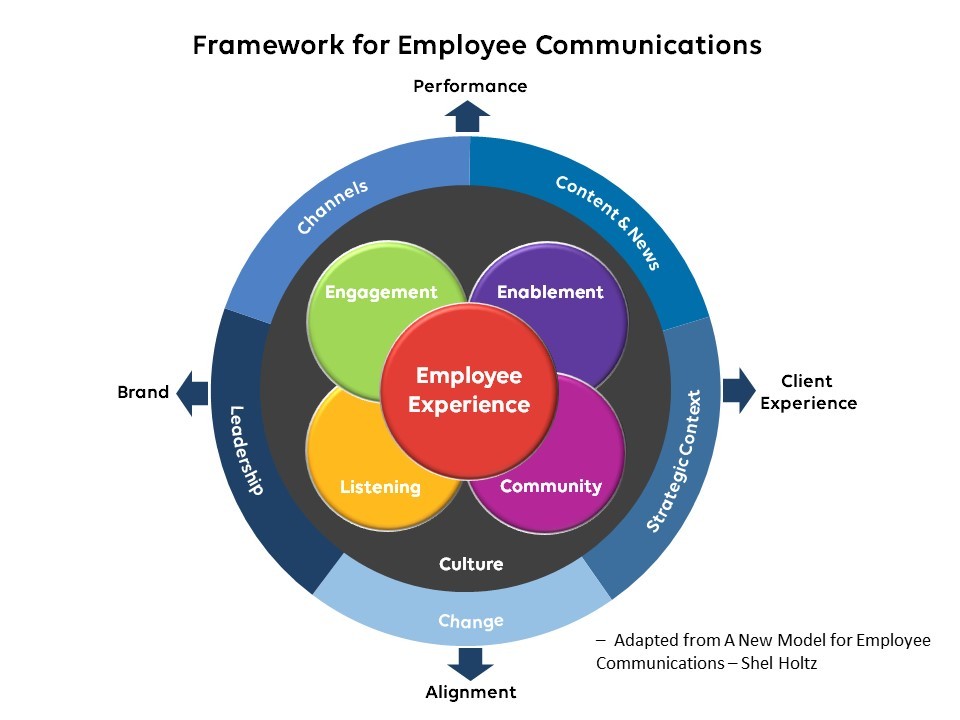[ad_1]
Many organizations I work with are finding that the pace of changing business demands has outpaced their current approach to employee communication.
At this point, I would say that it’s not just that we are playing the game differently – it’s that we’re playing an entirely different game. The battleground used to be corporate updates and loosely defined culture building.
Today, the battleground is the attention economy. In my experience, executives are consistently finding (much to their dismay) that many or most employees are:
- Reflexively hitting “delete” on all-staff email messages
- Tuning out of the Intranet
- Opting out of all staff town halls (or, very commonly, multitasking throughout them)
- Digging into their silos and information cocoons
- Challenging “officialspeak” and turning to informal networks as a single source of truth
At the same time, in working with employee communications teams, I hear chronic frustrations of being relegated to a tactical, after-thought function. It’s often described as a frustration of operating in a very small box. There’s a feeling of a confined scope for impact that leaves communicators feeling dispirited, disillusioned and disempowered.
What is striking is that this limiting box has often been built by the very communicators who are trapped in it. This looks like:
- Tactical tunnel vision
- Siloed work
- Disconnection from the business
A few years ago, the one and only Shel Holtz took aim at this self-limiting model of internal communications and proposed a New Model for Employee Communications. I loved it because it drew a bigger, more strategic box for the function.
With Shel’s permission, I dug into the model to add layers that emerge as being particularly relevant in today’s organizational communication landscape characterized by noise, change fatigue and information overload.
Here’s what I came up with:


A quick overview on the model’s design and components:
- Employee experience is at the heart. In our hybrid world, organizations are finding that they are getting bodies, not souls. We have to do better at dialing into the heart of why work matters and focus on meaningful experiences. In addition, the broken telephone game that occurs between recruitment, onboarding, career progression and exit is no longer sustainable.
- The strategic value of employee communications is multi-faceted and includes the critical components of enablement (i.e. setting employees up with the right information and the right context at the right time), community and belonging, listening and engagement.
- The space of employee communication happens in culture – and employee communication practitioners have a major role to play in defining and animating organizational culture. In our current context of hybrid work, defining culture as a means of sense-making and creating shared meaning has never been more important.
- A high-performance employee communications function has a strategic integration role for several dimensions including content and news, strategic business context, change, leadership and channel management. (Notice that channels are only one small part of the mix – your Intranet is not going to save you!)
- Since we don’t communicate for the sake of communicating, we want to identify key outcomes for the function. The intent is that employee communications drives business results in the areas of business performance, client experience, strategic alignment and brand.
The skillsets and more importantly, the mindsets required for a high-performance employee communications function have been redefined in the post-pandemic era. Employee communications leaders should effectively be stewards of the employees’ attention and focus. After all, what can be more important than the attention and focus of an organization’s employees?
If there was ever a time to unleash the imagination and ambition of internal communications professionals, surely this is it. Organizations that have the courage to let go of some control in exchange for authentic connection and meaning are sure to win.
[ad_2]
